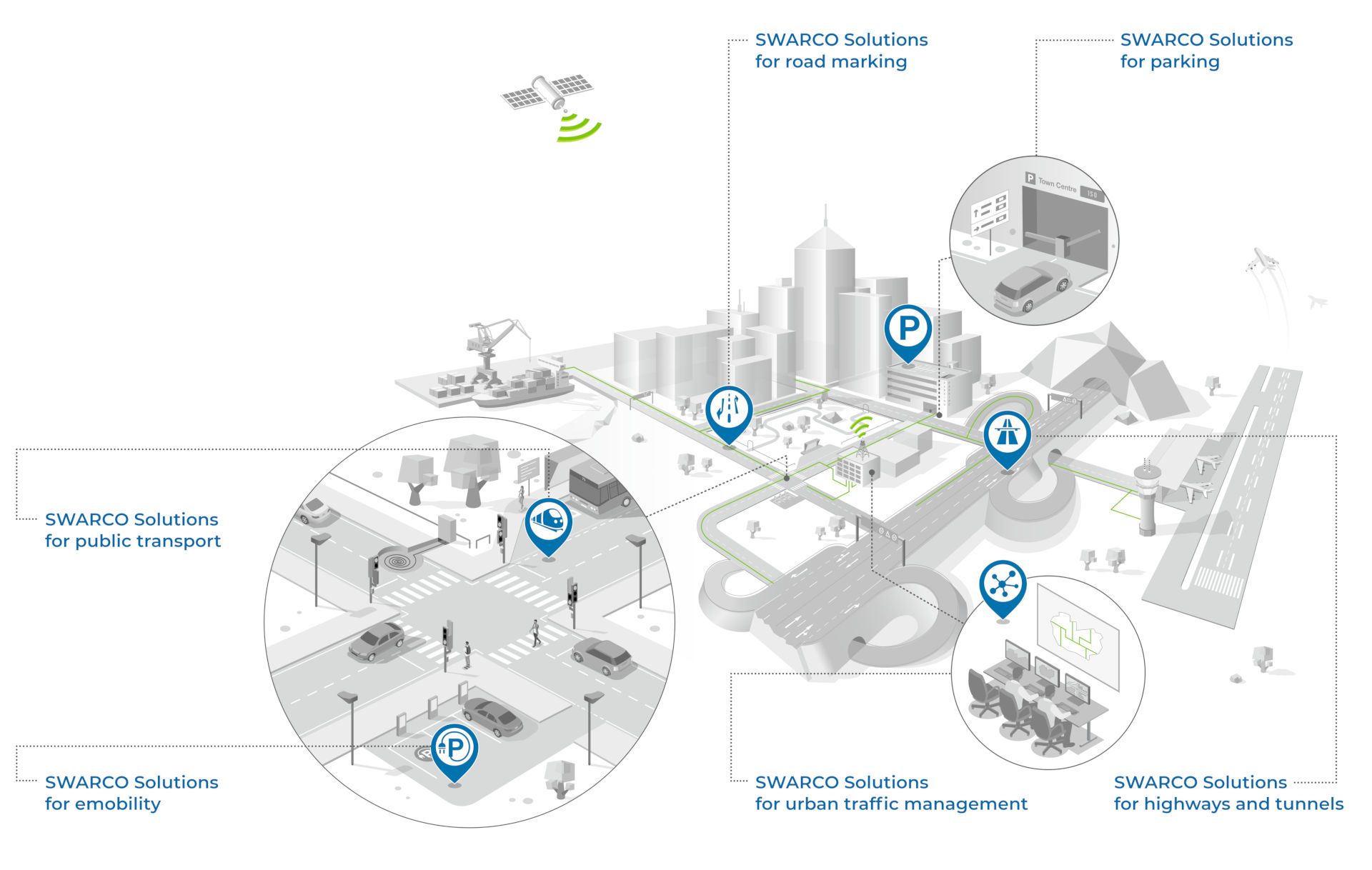Smart City / Green City
Cities all over the world are facing increasingly difficult challenges. The growth of the world population and increasing urbanization put cities under social, economic and environmental pressure.
In 1950 only 30 per cent lived in urban areas. In 2015 it was already 54 per cent and by 2050, 66 per cent of the world’s population is expected to live in cities. There is a direct relationship between urbanization, economic growth and development; contribution from towns and cities to Gross Domestic Product (GDP) has increased dramatically over the last 50 years and is expected to rise to 75% in 2021. Cities are accordingly referred to as the engines of economic growth.
However, there is a massive need for the cities to get smarter in order to be able to handle this large-scale urbanization and to find new ways to adapt to new situations, manage complexity, increase efficiency, reduce the ecological footprint, engage citizens, reduce expenses, and improve quality of life for everybody. Moreover, the impacts of urban systems on the "global warming" phenomenon is not negligible at all.
As a mobility expert, SWARCO is contributing to smarter and greener cities by constantly improving ITS technology to make transportation more efficient, more convenient and environmentally sound.
Mobility in the Smart City
Integrated Solutions

The ITS architecture of Smart Mobility
The Intelligent Transportation Systems (ITS) technologies will find a convenient field of application in a today’s Smart City.
The main technology and social trends:
The pervasive use of “applications” by large percentage of citizens. The applications, which are widely used through a series of personal terminals (such as smart phones and tablets today, up to “wearable computers” or “augmented reality tools” tomorrow) and can help individuals in their choices.
The “Internet of everything” paradigm which allows for “intelligent objects” (such as sensors of any kind, street lights, portable devices, outstations) deployed in the city, to exchange data and Information with service centers.
The increasing capability of data analytics, which – combined with the new technologies for ICT such as “cloud computing” - gives the opportunity for the efficient use of the large amount of data provided by “objects” and “individuals”.
The emergence of “connected cars”, which, in relation with the “Internet of everything” paradigm, in the near future will enable vehicle-to-vehicle (V2V) and vehicle-to-infrastructure” (V2I) communications. In turn, this will offer new opportunity for safety and efficiency in traffic.
The process toward more automated vehicles; semi-automated vehicles are already in the market and fully automated vehicles are foreseen for the next decade. This process will offer opportunities but will also create challenges, in particular in the city environment.
The (growing) positive attitude of citizens to act through “social networks”, which can facilitate active participation of travellers, exchange of information within groups and with management bodies (e.g. crowdsourcing).
The (growing) penetration of the paradigm of “shared economy” which could foster change in the mobility market (much less “ownership”, more “pay per use”). The combination of “more automation” and “more sharing” could provide for a disruptive change.
The new, innovative traffic management scheme of the future will come out as an intelligent combination of the previous technological and social trends: the “Smart Mobility” is the result of the continuous interaction and cooperation (made possible by an efficient connectivity) between “Smart Vehicles”, “Informed Travellers”, “Intelligent Sensors” and “Intelligent Management Systems”.
